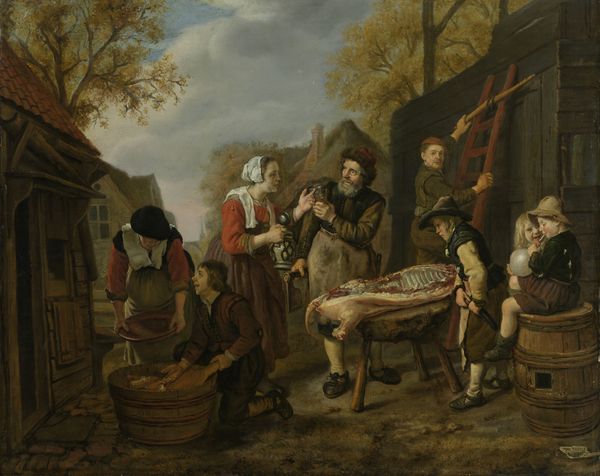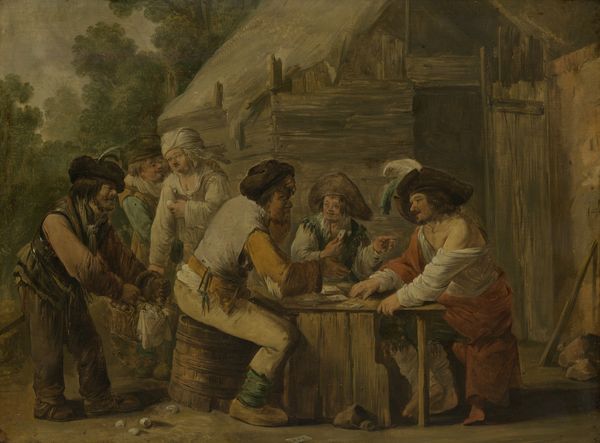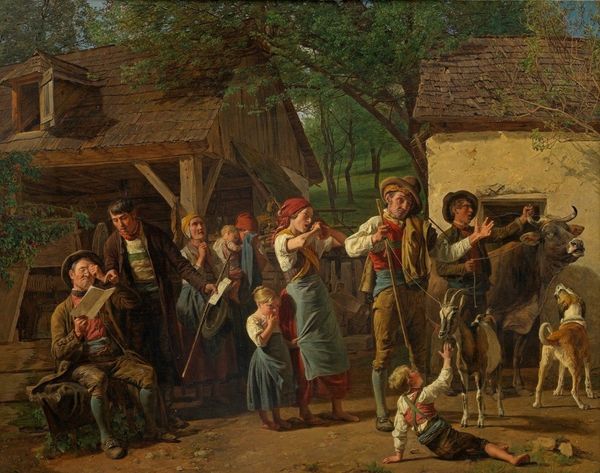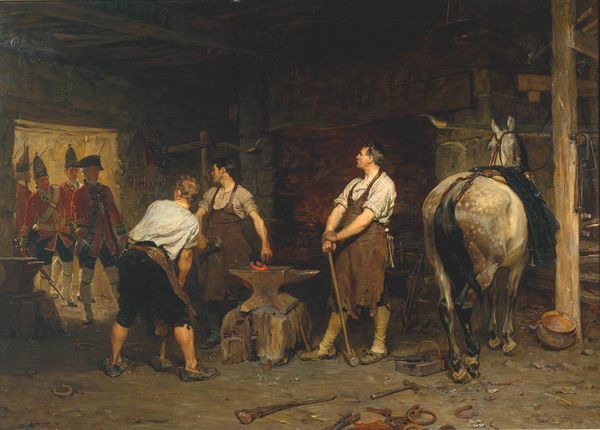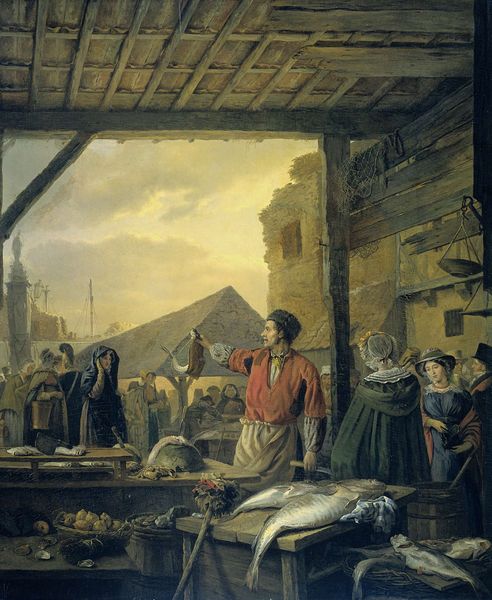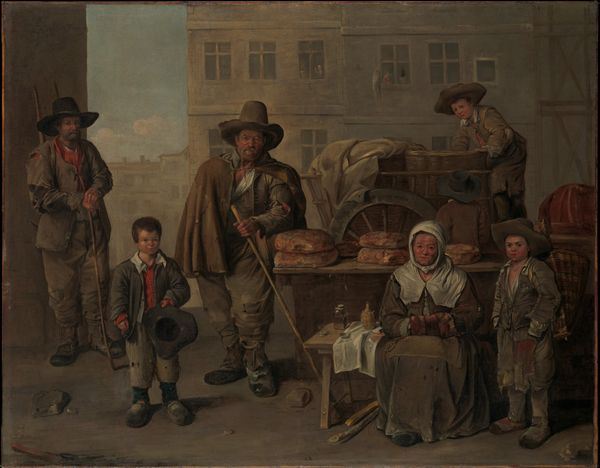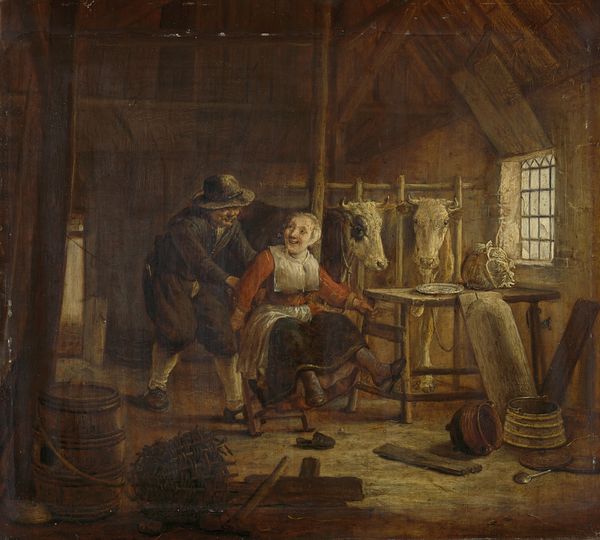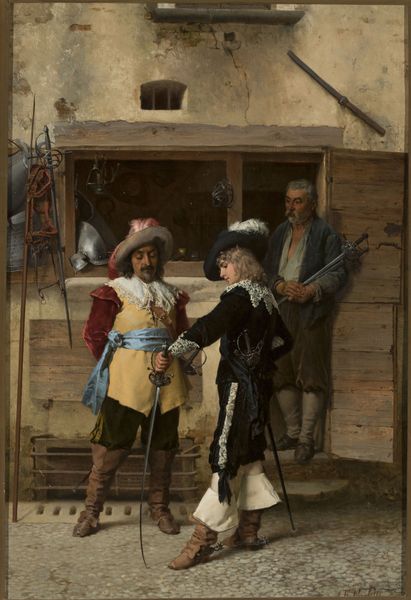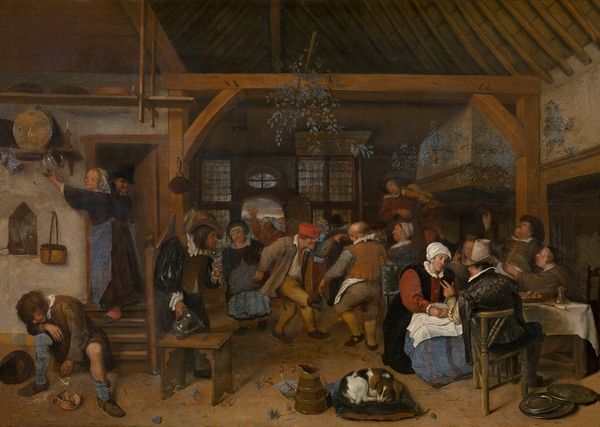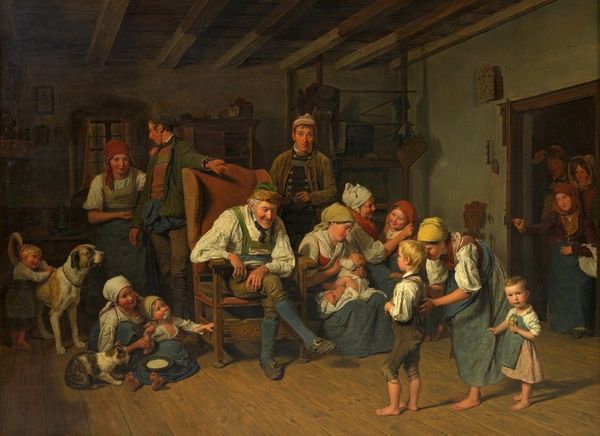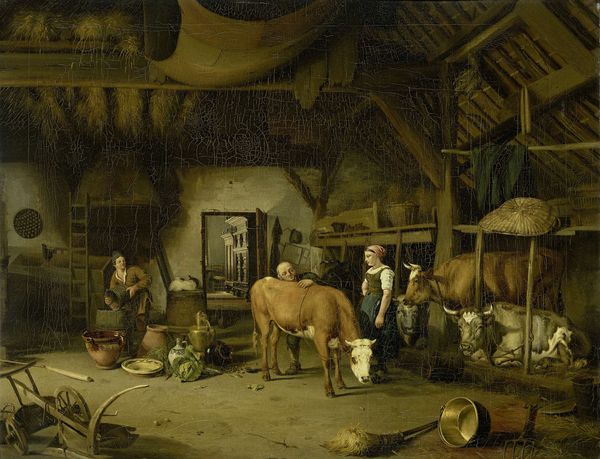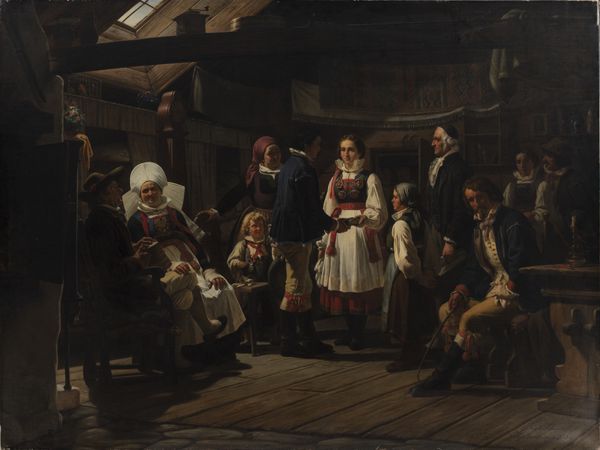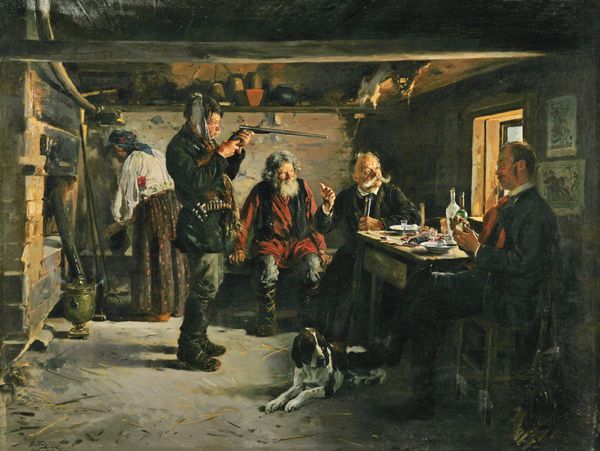
painting, oil-paint
#
dutch-golden-age
#
painting
#
oil-paint
#
oil painting
#
genre-painting
#
portrait art
#
realism
Dimensions: overall: 39.6 × 51.9 cm (15 9/16 × 20 7/16 in.)
Copyright: National Gallery of Art: CC0 1.0
Curator: Jan Victors' "The Slaughtered Hog," completed in 1653. What immediately strikes you about its construction? Editor: The brutal realism of the hanging hog dominates, of course. It’s fleshy, pale…visceral in its presentation, contrasting strangely with the mundane activities happening around it. There is a detachment that seems unsettling. Curator: Indeed. Consider the compositional arrangement. The hog is centrally positioned, almost bisecting the image, and secured into place using supporting sticks which gives rise to notions of formal structures and balanced geometries, even with such a loaded topic as slaughter. It's very clearly presented for inspection. Editor: Absolutely, and if you then consider the historical context, such scenes of daily life offered more than just an unidealized representation of common experience. This reflects the shift of power away from religious imagery, and a change towards civic pride in local life. What kind of symbolic reading do you give such an intimate, rather gory scene? Curator: Intriguingly, its composition bears echoes of religious iconography: a distorted crucifixion tableau, perhaps? Notice the pronounced rib cage – an emphasis on corporeality that then evokes notions of the ephemeral, the finite. It almost becomes a meditation on mortality using this slaughtered hog to deliver the idea. Editor: I read that almost against your formalism and as rather connected with a societal turn. Hog slaughtering in that period was both an economic activity and a social one, connecting communities and reinforcing hierarchies, of course, depending who got the best cut! How do the tonal variations affect your understanding of the work? Curator: The limited color palette—ochres, browns, creams—creates a sense of understated elegance despite the subject matter. The artist skillfully models light and shadow, drawing the eye towards the exposed interior of the hog. Furthermore, those secondary characters in muted palettes amplify the hog’s luminescence. It all brings the attention to bear there. Editor: Well, yes, these weren't glamourous, well-off lives being depicted! It captures an unsanitized truth of 17th-century life in a very direct way and makes the lives it represents visible to different eyes and at later dates, inviting viewers to see these folk in terms of material circumstance, a crucial component in assessing Victors' project, overall. Curator: Perhaps through its structure and focus, the image invites one to reflect on the transience inherent to human existence. Editor: And perhaps also on its representation of social practice, allowing an audience a clear glimpse into an earlier culture.
Comments
No comments
Be the first to comment and join the conversation on the ultimate creative platform.
